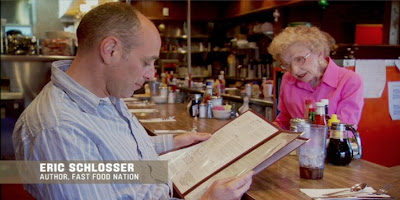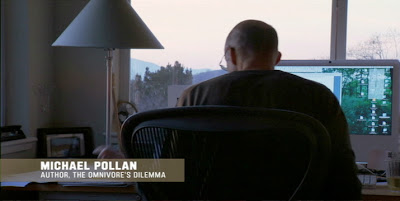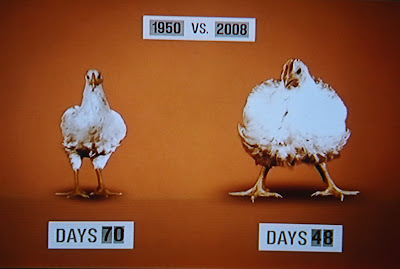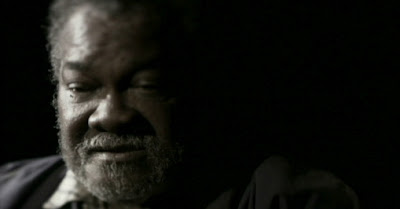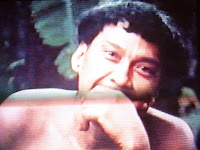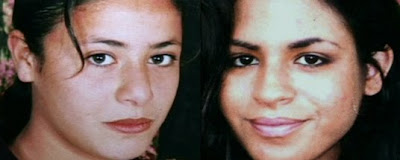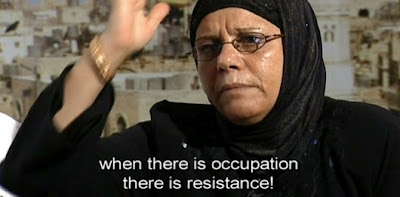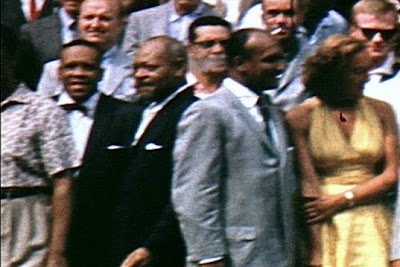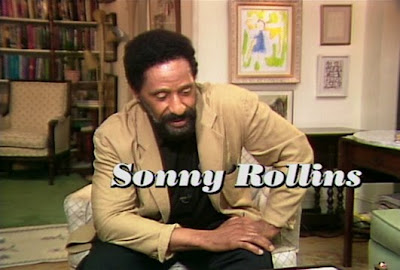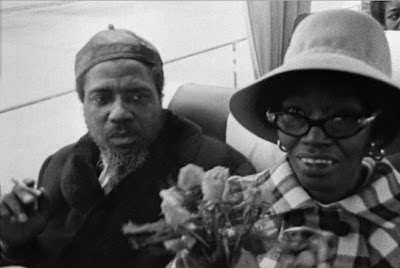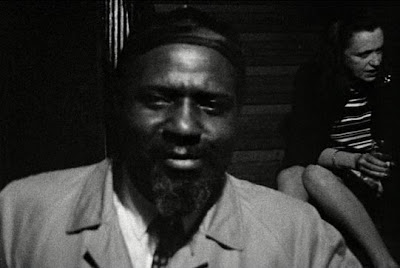





David Holzman's Diary (1967), by Jim McBride, is not a documentary -- an actor, L.M. Kit Carson, plays a filmmaker who decides to film his own life and who frequently speaks directly to the camera (top still). The film is a tremendously funny and prescient spoof of filmmaking and "one-man crew" shooting (in the second still, Holzman holds the camera on one shoulder; a portable reel-to-reel tape recorder hangs from his other shoulder). It anticipates the "skirt-chasing" genre (Ross McElwee's Sherman's March is another example) of documentary autobiography -- David Holzman's camera spies on, annoys, chases, and generally objectifies several women.
